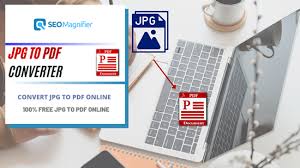PDF Conversion for Mobile: Best Apps and Strategies
Introduction
In today's digital age, mobile devices have become an integral part of our daily lives. With the increasing demand for accessibility and convenience, PDF conversion for mobile has gained significant importance. But what are the best apps and strategies to ensure a seamless experience? Let's dive in!
Importance of PDF Conversion on Mobile
Why Convert PDFs for Mobile?
Have you ever tried reading a non-optimized PDF on your mobile device? It can be a frustrating experience. Converting PDFs pdf a excel for mobile ensures that the content is tailored for smaller screens, offering a better user experience.
Benefits of Mobile-friendly PDFs
Mobile-friendly PDFs are not just about resizing; they optimize the layout, fonts, and images to fit mobile screens. This results in faster loading times, easier navigation, and improved readability.
Best Apps for PDF Conversion on Mobile
App 1: [Name]
[Description of App 1]
App 2: [Name]
[Description of App 2]
App 3: [Name]
[Description of App 3]
Strategies for Effective PDF Conversion on Mobile
Optimizing Layout and Design
When converting PDFs for mobile, it's essential to consider the layout and design. Simplify complex structures, use mobile-friendly fonts, and ensure that the content flows seamlessly.
Ensuring Readability
Readability is key when it comes to mobile PDFs. Adjusting font sizes, optimizing color contrasts, and using clear headings can significantly enhance the user experience.
File Size Management
Large PDF files can slow down mobile devices and consume data. Implementing strategies to reduce file sizes, such as compressing images and removing unnecessary elements, can help improve performance.
In today's digital age, the ability to convert various file formats to PDF (Portable Document Format) and vice versa is crucial for professionals across industries. Whether it's for preserving document integrity, ensuring universal compatibility, or leveraging advanced features, mastering advanced PDF conversion techniques can streamline workflows and enhance productivity. This guide delves into expert insights and strategies to help you navigate the complexities of PDF conversions effectively.
1. Understanding the PDF Format
Before diving into advanced techniques, it's essential to understand the basics of the PDF format:
- Structure: PDFs encapsulate text, images, fonts, and vector graphics in a single file.
- Universality: PDFs can be viewed on virtually any device or operating system without compromising layout or formatting.
- Security: PDFs offer robust encryption and password protection options.
2. Advanced Conversion Tools
While basic conversion tools are suitable for simple tasks, advanced scenarios demand specialized tools:
- OCR (Optical Character Recognition) Software: For converting scanned PDFs into editable text, tools like Adobe Acrobat Pro, ABBYY FineReader, or online platforms like OCR.space can be invaluable.
- Batch Converters: When dealing with multiple files, batch conversion tools such as PDFelement or Adobe Acrobat Batch Processing can save time.
- API-Based Solutions: For integration into custom workflows or software applications, API-based PDF conversion services like PDF.co provide flexibility and scalability.
3. Best Practices for High-Quality Conversions
Achieving high-quality conversions requires attention to detail:
- Maintain Original Formatting: Always prioritize tools and settings that preserve the original layout, fonts, and graphics.
- Resolution and Compression: Adjust resolution https://www.facepdf.com/ and compression settings to balance file size with quality, especially for scanned documents.
- Metadata and Accessibility: Ensure that converted PDFs contain relevant metadata and are accessible to users with disabilities by utilizing tagging and accessibility features.
4. Advanced Strategies for Specific Scenarios
Depending on your requirements, specific strategies may be more effective:
- Interactive Forms: Use tools like Adobe Acrobat to convert static forms into interactive PDF forms with fillable fields, checkboxes, and digital signatures.
- Multimedia Integration: Incorporate multimedia elements such as videos, audio clips, or hyperlinks using advanced PDF editors like Foxit PhantomPDF or Nitro Pro.
- Redaction and Security: Implement advanced redaction tools to securely remove sensitive information and apply encryption or DRM (Digital Rights Management) for enhanced security.
5. Automation and Integration
To optimize workflows, consider automation and integration options:
- Scripting and Macros: Leverage scripting languages like JavaScript within PDF editors to automate repetitive tasks or customize conversion processes.
- Integration with Document Management Systems: Integrate PDF conversion capabilities into existing Document Management Systems (DMS) or Content Management Systems (CMS) for seamless operations.
Conclusion
PDF conversion for mobile is more than just a trend; it's a necessity in today's mobile-centric world. By choosing the right apps and implementing effective strategies, you can ensure that your PDFs are optimized for mobile devices, offering a seamless and enjoyable reading experience.


Comments
Post a Comment